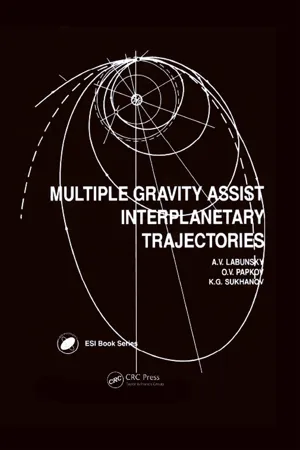
- 292 pages
- English
- ePUB (mobile friendly)
- Available on iOS & Android
Multiple Gravity Assist Interplanetary Trajectories
About This Book
Reflecting the results of twenty years; experience in the field of multipurpose flights, this monograph includes the complex routes of the trajectories of a number of bodies (e.g., space vehicles, comets) in the solar system.
A general methodological approach to the research of flight schemes and the choice of optimal performances is developed. Additionally, a number of interconnected methods and algorithms used at sequential stages of such development are introduced, which allow the selection of a rational multipurpose route for a space vehicle, the design of multipurpose orbits, the determination of optimal space vehicle design, and ballistic performances for carrying out the routes chosen. Other topics include the practical results obtained from using these methods, navigation problems, near-to-planet orbits, and an overview of proven and new flight schemes.
Frequently asked questions
Table of contents
- Cover
- Half Title
- Title Page
- Copyright Page
- Table of Contents
- Introduction
- 1. Dynamic scheme, models, and methods of analysis of spacecraft trajectories using gravity assist maneuvers
- 2. Methods and algorithms for the development of optimal multi-purpose missions
- 3. Ballistic methods in multi-purpose interplanetary spacecraft design
- 4. Analysis of multi-purpose schemes of interplanetary flight
- 5. Multi-purpose flights in planetary-satellite systems
- 6. Flights to small bodies in the solar system
- 7. Solution of navigational problems for multi-purpose missions at near-planet segments of the flight trajectory
- References
- Author index
- Subject index